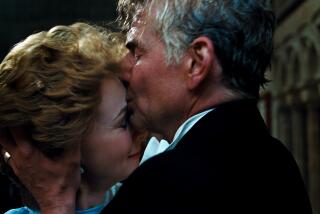Genre-bending cellist Ernst Reijseger popping up in many ways
If you happen to be at the Getty Center on Friday night or Saturday afternoon, you might bump into Dutch cellist Ernst Reijseger playing a pop-up recital. Times and places will not be announced. Nor should you even try to imagine what kind of music, let alone what music.
Reijseger is the most Dutch of cellists. He embodies the range of his country’s forward musical thinking, which means a forward approach to old music as well as new.
This kind of building bridges over musical canals is one of the things that makes Amsterdam so very interesting. And that is exactly what Reijseger does in the music he has also contributed to filmmaker Werner Herzog’s new video installation, “Hearsay of the Soul,” that opened at the Getty last week.
Reijseger began in the early music movement, for which Holland has been a longtime capital, playing a period-instrument Baroque cello. From there he leaped, in a way that the Dutch do with a startling lack of self-consciousness, into avant-garde music. From there to jazz, for which he is now best known.
CRITICS’ PICKS: What to watch, where to go, what to eat
Reijseger no longer discharges genres; he simply renders them irrelevant.
On his gripping new CD for the stylish Winter & Winter label, he joins Dutch jazz and classical pianist Harmen Fraanje and the extraordinary Senegalese vocalist and instrumentalist Mola Sylla.
When bowed, Reijseger’s cello sounds like Handel’s cello. Plucked one way it conveys Mingus’ bass. Plucked another way, it becomes sibling to Sylla’s mbira. This combo cooks not from the heat of cultures colliding but because they have a big kitchen for three chefs with many musical hats. There is even a little place, on this audacious opening among these open-minded players, for a little dip into Puccini, played with an unforced expressive honesty.
Reijseger’s music supplied the fourth dimension for Herzog’s other merely 3-D documentary, “Cave of Forgotten Dreams,” and for the “Hearsay” installation -- which concerns early 17th-century Dutch landscape etchings of Hercules Segers -- the cellist returns to his Baroque music roots as refracted through his experimental branches. Fraanje joins him on Baroque organ.
Also on Saturday at the Getty, Herzog and Reijseger will be on-hand to speak about their collaboration in the museum’s Herald M. Williams Auditorium at 5 p.m. Reservations are recommended.
ALSO:
‘Commedia’ is more than a little divine
Movie Review: ‘Cave of Forgotten Dreams’
Werner Herzog takes ‘La Boheme’ to Ethiopia in short film
More to Read
The biggest entertainment stories
Get our big stories about Hollywood, film, television, music, arts, culture and more right in your inbox as soon as they publish.
You may occasionally receive promotional content from the Los Angeles Times.







